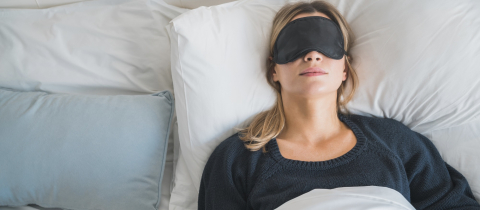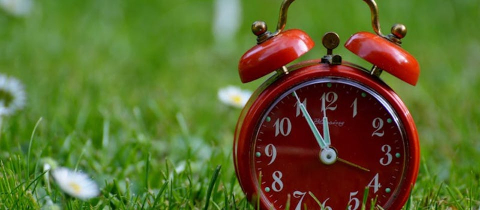Most regions on Earth oscillate between a bright daytime and dark nighttime. In anticipation of the varying presence of light, most organism populations have evolved an internal clock that adjusts their behaviours to the time of day (in humans, this clock exists in a part of our brain and certain peripheral organs). Matching the duration of our days, this circadian clock coordinates unconscious behaviours over roughly 24-hour cycles. For instance, during the mornings, humans burn calories faster, sustain higher body temperatures, and have enhanced concentration compared to evenings. Likely arising from random mutations early in the evolutionary tree, such variations in performance throughout a day helped organisms adapt their body’s activity to their access to food and safety, offering them a survival advantage. As a result, circadian clocks are found today in a variety of life forms. Cumulative research studies suggest that our human circadian clock controls the activity of a large range of proteins (specialized molecular labourers in our bodies that perform diverse tasks).
Although evolved to help organisms adapt, these inner rhythms can act similarly regardless of the surroundings. For instance, early European scientists began observing circadian activity in the 18th century in mimosa plants, which habitually open their leaves during the day and fold their leaves closed at night. Yet even when left in darkness for several days, the plants still consistently opened their leaves in the morning and closed them at dusk. These results suggested that the plants had an internal rhythm controlling their activities regardless of external lighting. Other plants and animals show similar circadian behaviour. The molecular mechanism of these biological clocks became clear when modern genetic advances enabled scientists to associate individual proteins with specific functions. Initial clock protein findings in the fruit fly, which won the 2017 Nobel Prize in Physiology and Medicine, illuminated the circadian clock as a self-sustaining cycle. In humans, scientists later found a similar cycle. This core clock regulates many output pathways, including metabolism. For instance, studies found that our bodies have habitual peaks of insulin levels which occur during usual feeding times, since insulin helps our bodies process sugar. Yet when mice lost a certain clock protein, the clock degraded and the insulin level fluctuations became flat. Secreting less insulin during feeding, the mice developed symptoms resembling diabetes.
Certain environmental factors, such as light, modify our circadian clocks. This input is helpful, since it allows sunlight to reset our biological clocks, such as when travellers recover from jetlag and adapt to a new time zone. Yet throughout the past century, the access to artificial lighting has encouraged humans to constantly change their sleeping and eating patterns, hindering our bodies from following a consistent schedule. Thus, we can willfully stay awake any night, despite rises in hormones like melatonin attempting to induce sleep. Appreciating the fine-tuned precision of our daily behavioural cycles, we may imagine how a lifestyle of haphazardly misaligning our internal clock with our environment (circadian misalignment), such as during rotating shift work, may lead to health risks. Since proving the molecular mechanisms responsible for human health issues is difficult (experiments on humans have tighter regulations than experiments on animals), most studies only look for correlations between circadian misalignment and significant trends in impaired human health. Although study results offer differing opinions, several suggest significant dangers, prompting a World Health Organization review in 2007 to conclude that “shift work that involves circadian disruption is probably carcinogenic to humans”. Yet a recent large epidemiological meta-analysis of women doing shift work for up to 30 years found that the women had no significant risk of developing breast cancer compared to women who did not do shift work. Consistent circadian misalignment has also been associated with other health consequences, such as increased risk for cardiovascular disease, cognitive impairment (reduced reaction times, slower arithmetic reasoning speed, impaired visual-motor performance), and even anxiety. Indeed, researchers found a correlation between humans with a clock protein mutation and higher self-rated anxiety scores, suggesting that molecular clock problems may explain why some people suffer poor mental health.
Although many results still need to be verified with repeated studies, a greater awareness of these circadian-misalignment health risks could guide future health policies and therapeutic approaches. For instance, in early 2017, Montreal began replacing its blue-rich street lights with warmer (red-rich) coloured lights, in response to scientific studies finding that blue light had a greater disturbance on human circadian clocks (by suppressing melatonin and delaying sleep). Similarly, many new electronics offer users the option to turn on “night mode,” which essentially removes some of the blue-rich light from screens, though few scientific studies have validated its usefulness. In drug delivery, the field of chronotherapy is gaining attention, suggesting that, due to our biological clocks, administering medicine at certain times of the day is significantly more effective than at other times. Since the initial discovery of molecular circadian clocks a few decades ago, the field of chronobiology has illuminated countless biological rhythms in our bodies. A growing amount of evidence suggests that inconsistent life schedules disrupt these rhythms and harm our health.
Want to engage with this content? Comment on this on our Facebook page!







